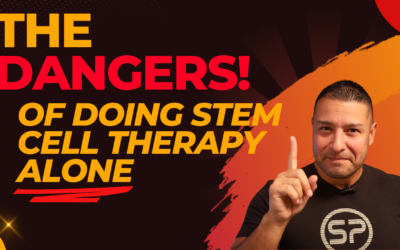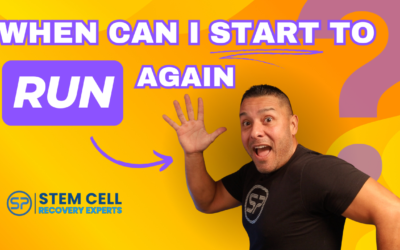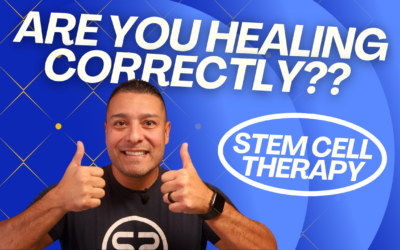“Why Stem Cell Therapy Works for Some but Not Others“
Stem cell therapy has been a breakthrough in modern medicine, offering hope for those with chronic pain or injuries. However, not everyone experiences the same results. Some patients see significant improvement, while others notice minimal change. Understanding the factors that influence the effectiveness of stem cell therapy can help set realistic expectations and guide recovery efforts. Below, we explore the three critical components that determine success: past medical history, present recovery practices, and genetics.
The Impact of Past Medical History
Your medical history plays a significant role in how well stem cell therapy works for you. Key considerations include:
- Extent of Previous Trauma: Whether you’ve had surgeries, significant injuries, or chronic pain, the condition of your tissue before therapy is crucial. For example, someone with bone-on-bone arthritis or a completely torn rotator cuff may see limited benefits compared to someone with mild or moderate tissue damage.
- Tissue Quality: Stem cells can only work with the tissue that’s already present. If your tissue is severely damaged, the results may be less dramatic than for someone whose tissue quality is better.
Patients with a long history of chronic issues might experience a “ceiling effect,” where improvements plateau at a certain point. On the other hand, those with recent injuries and good tissue health often respond more favorably.
The Role of Present Recovery Practices
What you do after receiving stem cell injections can make or break your results. Many people focus heavily on the decision to get the injections but neglect the importance of post-treatment recovery. Here are some critical factors:
- Structured Rehabilitation: Recovery is not a passive process. It requires a carefully designed progression plan, including:
- 0–6 weeks: Focus on bodyweight movements.
- 6–12 weeks: Gradual introduction of resistance exercises.
- 12+ weeks: Progressively increasing weights and functional activities.
- 6 months: Achieving full recovery with proper guidance.
- Working with Experts: Hiring a specialist with experience in stem cell recovery is essential. Avoid opting for convenience or cost-cutting, as improper guidance can severely impact your outcomes.
If you neglect the recovery process or rely on inexperienced professionals, you risk undermining the potential benefits of the therapy.
Genetic Influence
Your genetics are an uncontrollable yet significant factor in how your body responds to stem cell therapy. Key considerations include:
- Cell Acceptance: Some bodies accept stem cells better than others, while certain individuals may experience an inflammatory response or limited cell integration.
- Healing Rates: Genetic factors determine how quickly and effectively your body heals after treatment.
Unfortunately, these genetic variables can only be assessed after undergoing the therapy, making them an unpredictable element.
Avoiding Common Pitfalls
Many patients mistakenly compare stem cell therapy to surgeries or other treatments like PRP or cortisone injections. These therapies are not interchangeable; stem cell recovery requires its own unique approach. A haphazard or “wait and see” approach can lead to suboptimal results, emphasizing the need for a steady, calculated recovery plan.
Maximizing Your Results
If you’re considering stem cell therapy or have already undergone treatment, the best way to optimize your outcomes is to focus on what you can control:
- Partner with a knowledgeable expert in stem cell recovery.
- Follow a structured recovery timeline tailored to your condition.
- Take a proactive approach to rehabilitation and lifestyle changes.
Get Expert Guidance
If you feel stuck or unsure about your recovery process, reaching out to professionals who specialize in stem cell therapy can make all the difference. At Stem Cell Recovery Experts, we provide tailored plans to ensure you maximize your outcomes and achieve long-lasting results.
Need More Guidance?
For more resources or assistance with your recovery, feel free to contact the Stem Cell Recovery Experts who specialize in stem cell rehabilitation. For more recovery tips and long-lasting results, feel free to call us (619-397-1391). We’re here to help!
If you found these tips helpful, don’t forget to subscribe to our YouTube channel (CLICK HERE) for weekly updates on how to recover safely and effectively after stem cell therapy.
If you’re a visual learner, check out the YouTube video I created on this topic:
Sincerely,
Dr. Chris Garcia, PT, DPT, SCS, CSCS, USAW

“Dr. Chris Garcia is the world-renowned expert on stem cell recovery, internationally recognized public speaker, and trusted advisor to physical therapists globally.”
The Dangers of a DIY Stem Cell Recovery Program
"The Dangers of a DIY Stem Cell Recovery"When it comes to stem cell recovery, many people believe they can manage the process on their own. After all, if you’re active and have successfully recovered from past injuries without professional guidance, why not do the...
When Can I Start to Jog After Stem Cell Injections?
"When Can I Start to Jog After Stem Cell Injections" If you miss running and are wondering when it’s safe to start jogging after stem cell injections, you’re not alone. This is a common question for individuals eager to return to their active lifestyle. The key is to...
How Can You Tell If You Are Healing Correctly After Stem Cell Injections?
"How Can You Tell If You Are Healing Correctly After Stem Cell Injections?" Did you know there is an easy way to determine if you're healing properly after stem cell injections? In this blog, we’ll cover key insights to help you understand the healing process and...



